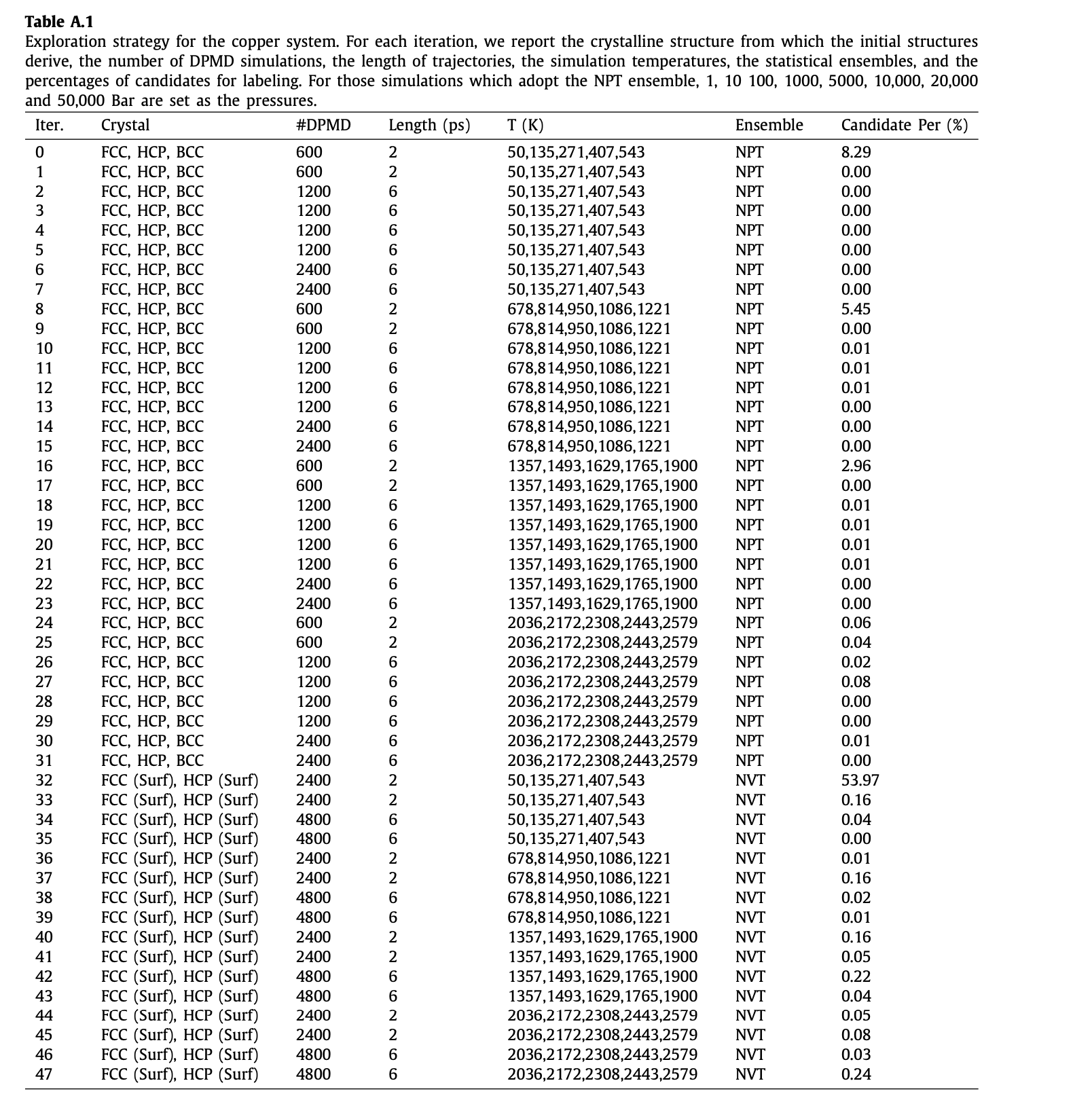Replies: 2 comments 2 replies
-
|
What’s the difference between iter0 and iter29? Are the pressures and temperatures the same? |
Beta Was this translation helpful? Give feedback.
2 replies
-
|
I have also encountered this problem. Have you solved it? |
Beta Was this translation helpful? Give feedback.
0 replies
Sign up for free
to join this conversation on GitHub.
Already have an account?
Sign in to comment

Uh oh!
There was an error while loading. Please reload this page.
-
Dear users,
I am using dpgen to explore training data, and I find that as iter increases, both the absolute value and the fluctuation of rmse_f_trn become larger. For iter.00 it is <0.1 and fluctuates around 0.1, but for iter.29 it fluctuates between 0.2~0.5. When doing the dp-test for the same database, RMSE for iter.29-model is also bad than earlier model.
I check the data added to training base every iter and they are normally convergent. I tried to use more hidden layers and nodes, there is no significant improvement. I also tried to train with more steps, and dp-test results did not improve significantly either. I wonder whether this phenomenon is normal and what I can do to improve it.
Besides, when I used the dp_model in large-scale MD, a large number of H atoms agglomerated (more than 2) and some bond length of H-H is smaller than theoretical value. I alse add some multi-hydrogen system data to training base but have no significant improvement. Should I continue to increase the number of relevant configurations for training? Is it right to add the problem configurations to the training set in order to make network learn that this configuration is not reasonable? I would be very grateful if there are other suggestions.
Thanks a lot!
Beta Was this translation helpful? Give feedback.
All reactions